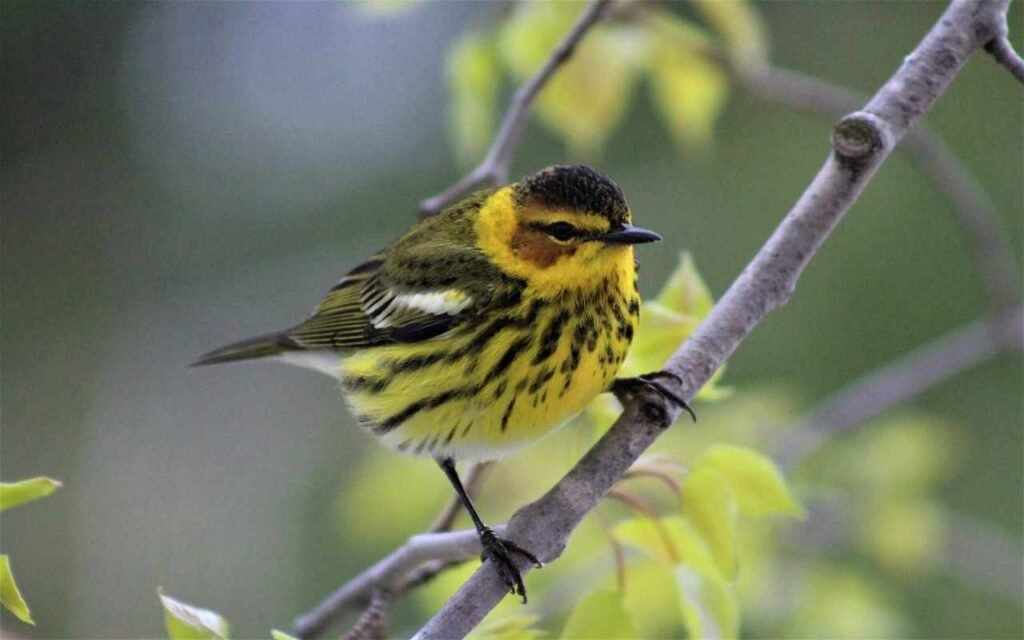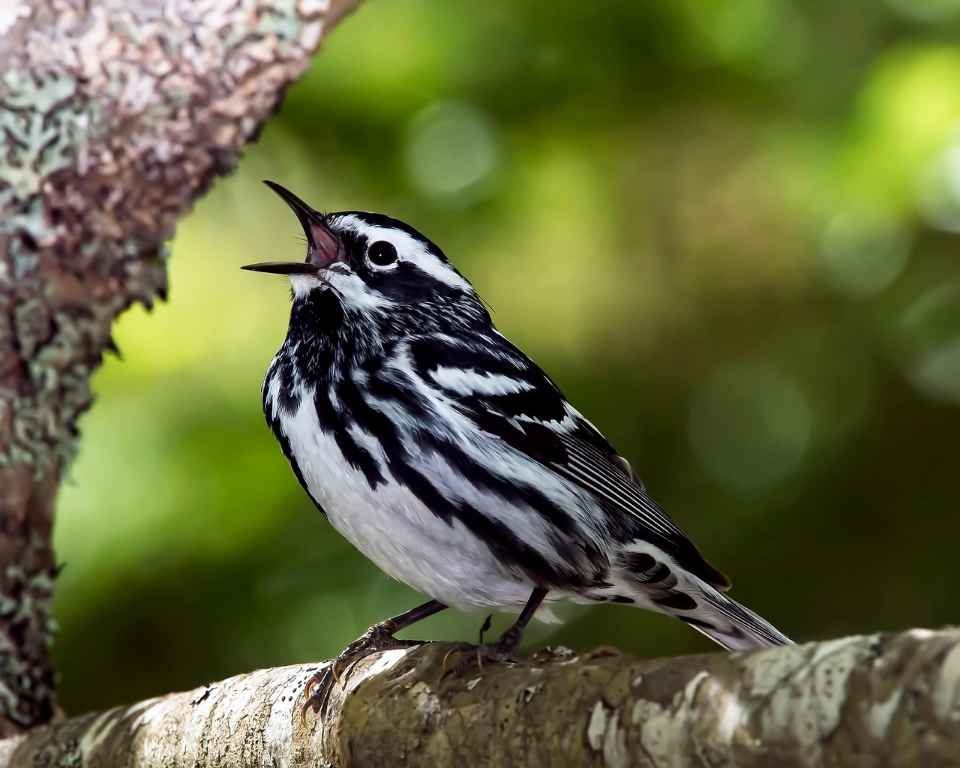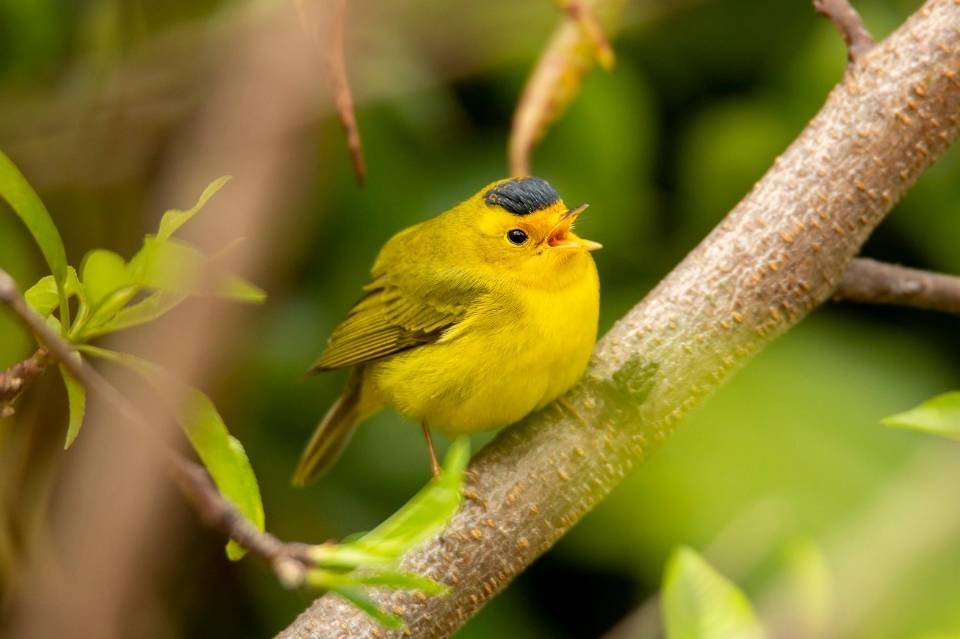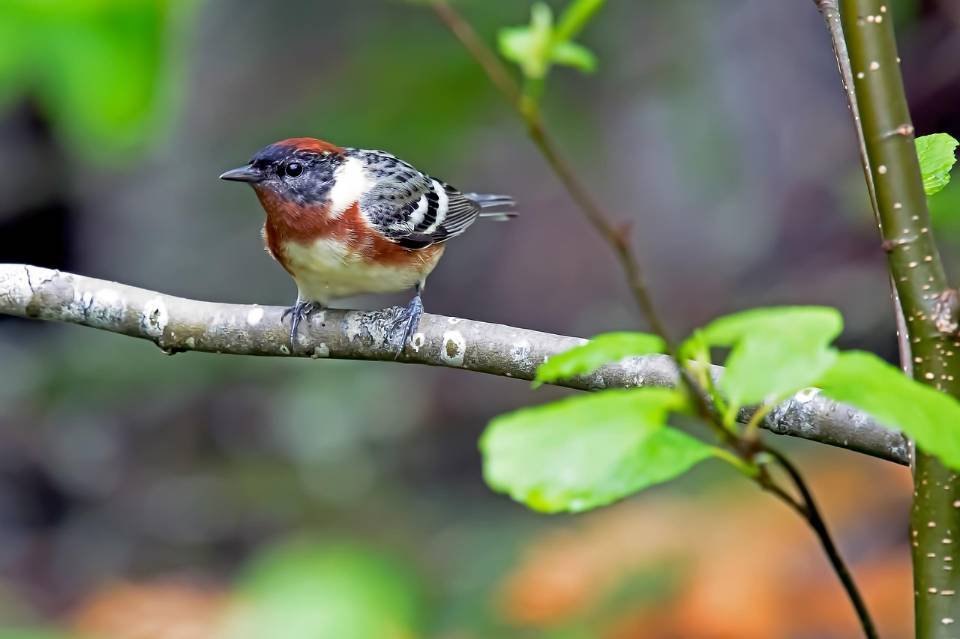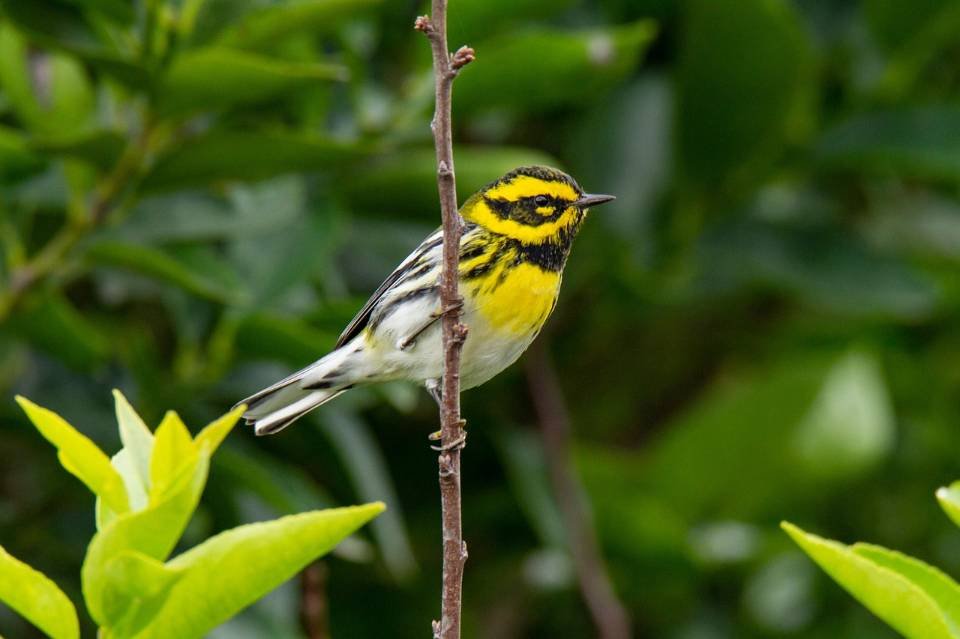Last September, I nearly spit out my morning coffee 😲 when a Blackburnian Warbler landed right outside my kitchen window. One minute I’m scrolling through emails, the next I’m scrambling for binoculars because this little orange-throated jewel decided my backyard maple was the perfect pit stop.
That moment changed everything I thought I knew about fall birding. Turns out, you don’t need to trek to famous migration hotspots to witness one of nature’s most incredible spectacles, warbler migration happens right in your own backyard if you know when and how to look.
The journeys are incredible — Audubon’s Bird Migration Explorer lets you track where and when hundreds of species move across the hemisphere in real time.
Why Fall Warbler Migration Beats Spring (Yeah, I Said It)
Most birders get hyped about spring migration, and sure, it’s exciting. But fall warbler migration? That’s where the real magic happens. Spring migrants are focused, driven, and honestly a bit stressed about reaching breeding grounds. Fall migrants are taking their sweet time, fattening up, and actually sticking around long enough for you to get a decent look.
Here’s the kicker: juvenile warblers make up a huge chunk of fall migrants. These young birds haven’t developed the wariness their parents have, so they’re more likely to forage openly and let you observe their behavior. I’ve watched baby Yellow Warblers work the same branch for ten minutes straight, completely oblivious to my presence.
Fall migration also lasts longer than spring migration. While spring can feel like a mad rush lasting just a few weeks, fall migration stretches from late July through October, giving you multiple opportunities to spot different species as they move through your area. As Audubon notes, the season kicks off surprisingly early in midsummer and keeps going well into autumn.
Understanding Warbler Migration Timing
Timing is everything in warbler watching, and fall migration follows predictable patterns that work in your favor. Different warbler species migrate at different times, creating waves of activity that peak and ebb throughout the season.
Early Migration: Late July to Mid-August
The first wave surprises most backyard birders because it starts while summer’s still in full swing. Yellow Warblers and American Redstarts kick things off, along with some Chestnut-sided Warblers. These early migrants often include failed breeders and birds that finished nesting successfully but started their journey south early.
I remember thinking my eyes were playing tricks on me when I spotted my first Yellow Warbler in late July. Shouldn’t they still be raising babies? Turns out, successful early nesters often begin migration surprisingly early, especially if food sources start declining. According to All About Birds, these shifts in timing are part of predictable migration patterns birders can use to their advantage.
Peak Migration: Late August to Mid-September
This is when things get really interesting. The floodgates open and warblers pour through in numbers that can make your head spin. Tennessee Warblers, Bay-breasted Warblers, Magnolia Warblers, and Black-throated Blue Warblers create the backbone of peak migration activity.
During peak migration, I’ve counted over a dozen warbler species in a single morning session. The trick is getting out early—dawn to mid-morning offers the best activity as birds fuel up after traveling all night.
Late Migration: Mid-September to Early October
The stragglers and late migrants include some real prizes. Yellow-rumped Warblers dominate late migration, but you might also spot Pine Warblers, Palm Warblers, and the occasional Orange-crowned Warbler. These hardy species can handle cooler temperatures and don’t need to rush south like their more cold-sensitive cousins.
Creating Your Backyard Warbler Magnet
You don’t need acres of pristine habitat to attract migrating warblers. Smart landscaping and strategic resources can turn even small urban yards into warbler pit stops. The key is understanding what exhausted migrants need most: food, water, and shelter.
Food Sources That Actually Work
Forget what you’ve heard about warblers only eating insects in treetops. Migrating warblers are opportunistic feeders that’ll take advantage of whatever’s available. I’ve watched Tennessee Warblers absolutely demolish elderberries, and Bay-breasted Warblers gorging on pokeweed fruit.
Plant these warbler magnets:
• Native berry producers: elderberry, sumac, pokeweed, dogwood
• Insect-attracting flowers: goldenrod, asters, joe-pye weed
• Seed-head plants: sunflowers, coneflowers (yes, some warblers eat seeds!)
• Native trees: oaks support 500+ caterpillar species that warblers devour
Water: The Universal Attraction
Water trumps food every time for attracting warblers. These small birds lose significant body weight during long overnight flights and desperately need to rehydrate. Still water works, but moving water creates an irresistible beacon that can pull warblers from considerable distances. According to BirdWatching Daily, adding motion or sound to a birdbath can dramatically increase the number of visitors. Just don’t forget the importance of keeping your bird bath clean—a dirty bath can spread disease.
My game-changer was adding a small recirculating fountain to my birdbath. The sound of dripping water travels much further than you’d expect, and I’ve had warblers appear within minutes of turning it on. Position water sources near shrubs or small trees where nervous warblers can quickly take cover if needed.
Shelter and Foraging Structure
Warblers prefer layered vegetation that mimics their natural forest habitats. Create vertical structure with canopy trees, understory shrubs, and ground-level cover. This setup provides multiple foraging niches for different warbler species while offering escape routes from predators.
I learned this lesson after watching warblers completely ignore my open lawn but spend hours working the edge where my shrubs met taller trees. Edge habitats concentrate insect activity and provide the mixed vegetation structure warblers crave.
Identification Tips for Fall Warblers
Fall warbler identification challenges even experienced birders. Breeding plumages fade, juveniles look nothing like their parents, and molt timing creates birds that don’t match field guide illustrations. But don’t let “fall warbler confusion” intimidate you—a few key strategies, backed by resources like Audubon’s review of The Warbler Guide, make identification much more manageable.
Focus on Shape and Behavior First
Before you get lost in plumage details, nail down the basics. Bill shape tells you a lot about feeding behavior. Thin, pointed bills indicate insect gleaners, while slightly thicker bills suggest birds that also eat berries and seeds.
Tail patterns stay consistent between seasons and age groups. White outer tail feathers on American Redstarts flash like little beacons, while Magnolia Warblers show distinctive white tail bands from below.
Foraging behavior provides excellent identification clues that don’t change with plumage. Yellow-rumped Warblers fly-catch more than other species, while Black-and-white Warblers creep along bark like tiny nuthatches.
The “Fall Warbler Big Three”
Three species dominate fall migration in most areas, and learning these first builds confidence for tackling trickier identifications:
Yellow-rumped Warbler: The yellow rump patch shows in all plumages and seasons. These birds are everywhere during fall migration and eat berries readily, making them easy backyard targets.
American Redstart: Males keep enough orange in their tails and wing patches to remain recognizable, while females and juveniles show bright yellow patches in the same locations.
Magnolia Warbler: The white undertail coverts with black terminal band create a distinctive pattern that’s consistent across ages and seasons. Plus, they love low shrubs where you can actually see them 🙂
Common Confusion Species
Some fall warblers cause more headaches than others. Tennessee Warblers and Orange-crowned Warblers look frustratingly similar in fall, but Tennessee Warblers show cleaner white undertail coverts and more contrasting eyelines.
Bay-breasted and Blackpoll Warblers in fall plumage nearly broke my brain until I learned to focus on leg color (dark in Bay-breasted, pale in Blackpoll) and overall posture (Bay-breasted appears more compact).
Best Times and Conditions for Warbler Watching
Successful warbler watching requires understanding both daily timing and weather patterns that influence migration activity. Get these factors right, and you’ll see more warblers in a morning than most people spot all season.
Daily Timing: Dawn Patrol Pays Off
Warblers migrate at night and typically arrive in new areas just before or at dawn. They’re hungry, tired, and focused on refueling, making early morning the prime observation window. I set my alarm for 30 minutes before sunrise and I’m outside with coffee and binoculars as the sky lightens.
Peak activity typically occurs from first light until about 10 AM. After that, warblers often retreat to dense cover for midday rest, emerging again for late afternoon feeding before the next night’s flight.
Weather: Your Migration Forecast
Weather drives migration timing more than calendar dates. Cold fronts trigger massive movements as warblers get pushed south by changing atmospheric pressure and wind patterns. The day after a cold front passes often provides spectacular warbler watching.
Light winds from the north or northwest indicate good migration conditions. Strong winds, especially from the south, often ground migrants temporarily, concentrating them in whatever habitat they can find. This can create incredible local fallouts where dozens of warblers appear in areas that normally host just a few.
Clear nights following overcast days often produce excellent next-morning birding as migrants take advantage of improving visibility conditions.
Recording and Tracking Your Observations
Keeping records transforms casual warbler watching into meaningful citizen science while helping you understand migration patterns in your specific area. You don’t need fancy equipment or scientific training—just consistent observation and simple record keeping.
eBird: Your Digital Field Notebook
eBird revolutionized bird observation tracking, and it’s absolutely free. I submit a checklist every time I go warbler watching, even if I only see common species. This data helps scientists understand migration timing, route changes, and population trends.
The best part? eBird shows you what other people are seeing in your area, helping you time your own observations. When multiple people start reporting Bay-breasted Warblers in nearby locations, you know it’s time to spend extra time outdoors.
Photography: Document the Memories
You don’t need expensive camera gear to document warbler sightings. Modern smartphones take surprisingly good bird photos, especially when you use telephoto attachments or zoom functions. The goal isn’t perfect images—it’s capturing diagnostic features for later identification confirmation.
I keep a simple photo log with date, time, location, and behavior notes. Looking back through these records reveals patterns I never noticed while actively birding. Certain trees consistently attract specific warbler species, and timing patterns become clearer with documented evidence.
Common Backyard Warbler Species
While over 50 warbler species breed in North America, a much smaller number regularly visits backyard habitats during fall migration. Learning these backyard regulars first creates a solid foundation for expanding your warbler knowledge.
The Reliable Visitors
Yellow-rumped Warblers top every backyard list for good reason. They eat berries, tolerate cold weather, and adapt well to human-modified landscapes. In some areas, they’re so common during fall migration that you almost take them for granted. Almost.
American Redstarts love edge habitats where yards meet wooded areas. Their fly-catching behavior makes them entertaining to watch, and both sexes flash enough color to make identification straightforward.
Magnolia Warblers prefer low vegetation, making them perfect for backyard observation. They often forage at eye level in shrubs and small trees, giving you excellent viewing opportunities for studying field marks and behavior.
The Pleasant Surprises
Black-throated Blue Warblers occasionally visit backyards with appropriate habitat structure. Females and juveniles look completely different from breeding males, appearing brownish with subtle wing patches and white eyebrows.
Chestnut-sided Warblers peak early in fall migration but regularly visit yards with berry-producing shrubs. Young birds show lime-green upperparts that can confuse observers expecting the rusty sides of breeding adults.
Tennessee Warblers appear during food abundance years, especially when aphid populations explode on oak trees. They’re small, active, and surprisingly aggressive around rich feeding sites.
Regional Specialties
Depending on your location, certain warblers become local specialties that other regions rarely see. Golden-winged Warblers visit mountain regions consistently, while Prothonotary Warblers appear near water sources in appropriate range areas.
IMO, learning your regional specialties makes backyard warbler watching much more rewarding. These are the species that’ll make your birding friends jealous when you casually mention seeing them in your yard.
Troubleshooting: When Warblers Don’t Show Up
Sometimes you do everything right—perfect habitat, ideal timing, great weather—and warblers simply don’t appear. This happens to everyone, and understanding why helps manage expectations and improve future success.
Habitat Limitations
Not all yards can support good warbler diversity, and that’s okay. Heavily manicured landscapes with non-native plants, extensive lawns, and limited vertical structure simply don’t provide what warblers need. If your yard fits this description, focus on attracting the most adaptable species while gradually adding native plants and structure.
Urban heat islands can push migration corridors away from city centers, concentrating activity in parks and suburban areas with more vegetation. If you live in a dense urban area, consider supplementing backyard birding with visits to nearby green spaces during peak migration.
Competition from Better Habitat
Sometimes warblers don’t visit your yard because better habitat exists nearby. Large parks, nature preserves, or wooded areas provide more diverse resources than individual backyards can offer. This doesn’t mean your efforts are wasted—you might be supporting birds that roost elsewhere but feed in your yard, or providing critical resources during weather emergencies.
Timing Mismatches
Migration timing shifts with climate patterns, making prediction challenging. What worked last year might not work this year if weather patterns change. Keep flexible expectations and extend your observation periods rather than expecting specific species on specific dates.
Advanced Techniques for Serious Enthusiasts
Ready to take your backyard warbler watching to the next level? These advanced strategies separate casual observers from dedicated migration enthusiasts.
Playback and Pishing
Pishing (making “pish-pish-pish” sounds) can attract curious warblers within hearing range, but use this technique sparingly. Overuse stresses birds and can disrupt natural foraging behavior. I limit pishing to brief sessions when I hear warblers but can’t locate them visually.
Song playback works best with territorial species during breeding season, but it’s less effective during fall migration when birds aren’t defending territories. Save playback for spring migration or breeding season observations.
Microhabitat Management
Create multiple feeding niches within small spaces to attract diverse warbler species. Leave some areas slightly unkempt to support increased insect populations, while maintaining cleaner areas for water sources and observation points.
Brush piles provide excellent warbler habitat when positioned strategically. I create small brush piles from pruned branches and fallen limbs, placing them near feeding areas but away from main viewing windows to avoid blocking sightlines.
Weather Tracking and Prediction
Radar weather apps show precipitation patterns that often correspond with migration movements. Heavy rain can ground migrants, creating concentration opportunities when weather clears. Learn to read weather patterns like a migration forecaster.
BirdCast migration forecasts use weather data and historical patterns to predict migration intensity. These forecasts help you plan observation efforts around peak activity periods rather than relying on luck.
Creating Migration Stopover Habitat
Transform your backyard into a migration rest stop that provides everything exhausted warblers need for successful journeys. This goes beyond basic bird-friendly gardening to create specialized habitat for long-distance migrants.
Layered Vegetation Structure
Vertical diversity mimics natural forest structure that warblers evolved to use. Canopy trees provide singing perches and nest sites for breeding residents, while understory shrubs offer berries and shelter. Ground-level plants support insect populations and provide additional food sources.
Create foraging zones at different heights. High canopy supports species like Cerulean Warblers (if you’re lucky enough to host them), mid-level shrubs attract Magnolia and Chestnut-sided Warblers, while ground-level cover supports Ovenbirds and other skulking species.
Native Plant Succession
Succession planning ensures habitat evolution that continues supporting birds as your landscape matures. Young gardens might attract shrubland species, while mature landscapes support canopy specialists. Plan for both immediate needs and long-term habitat development.
Edge maintenance requires ongoing management to prevent overgrowth while maintaining the diverse structure warblers prefer. I selectively prune and thin vegetation to maintain multiple successional stages within the same yard.
Connecting with the Warbler Community
Warbler watching connects you with a passionate community of birders who share knowledge, sightings, and conservation concerns. These connections enhance your own observations while contributing to broader understanding of warbler populations and migration patterns.
Local Birding Groups
Audubon chapters and birding clubs often organize migration walks and sharing sessions where experienced members help newcomers learn identification skills. I learned more about fall warblers in my first group walk than in months of solo observation.
Online communities provide instant access to local sighting reports and identification help. Facebook groups, birding forums, and eBird comments create virtual birding communities that share information in real time.
Citizen Science Contributions
eBird data contributes to scientific understanding of migration patterns, population trends, and habitat preferences. Your backyard observations, combined with thousands of others, create detailed pictures of warbler distribution and abundance that researchers use for conservation planning.
Journey North tracking helps document migration timing across different regions, while Christmas Bird Counts and Breeding Bird Surveys provide additional data points for long-term population monitoring.
Conservation Through Backyard Habitat
Creating warbler-friendly backyards contributes to landscape-scale conservation efforts that support declining warbler populations. While individual yards might seem insignificant, collective habitat creation makes measurable differences for migrating birds.
The Bigger Picture
According to Birds Canada, habitat fragmentation is one of the biggest threats to bird populations overall, and warblers are no exception. Backyard habitat helps counter this by creating stepping stones that connect larger forested areas, allowing birds to move safely across otherwise hostile landscapes.
Climate change shifts migration timing and route patterns, making flexible habitat resources increasingly important. According to The Indigenous Climate Hub, these seasonal shifts are already affecting traditional practices and wildlife patterns.
Your backyard might become critical habitat as birds adjust to changing environmental conditions.
Pesticide-Free Zones
Insecticide use devastates the food webs that support warbler populations. According to Hinterland Who’s Who, creating pesticide-free zones allows natural predator-prey relationships to develop, supporting the insect populations that warblers need for successful migration and breeding.
FYI, going pesticide-free doesn’t mean accepting destructive pest levels. Natural predators, including the warblers you’re trying to attract, provide excellent biological pest control when given the chance.
Seasonal Maintenance and Long-term Planning
Maintaining warbler habitat requires understanding seasonal needs and planning for long-term landscape changes. Different seasons place different demands on habitat resources, and successful warbler gardens adapt to these changing requirements.
Fall Preparation
Seed head management balances aesthetics with bird food production. Leave some areas untidy for seed production while maintaining clean sightlines around water sources and favorite observation spots.
Water source winterization ensures year-round availability, which becomes increasingly important as natural water sources freeze or dry up during harsh weather periods.
Spring Preparation
Nesting site preparation includes cleaning out old nest boxes, pruning dead branches that might harbor predators, and ensuring dense shrubs remain undisturbed during breeding season.
Food source timing requires understanding which plants provide early season resources when migrants arrive before insect populations peak. Early flowering plants support the insects that support early arriving warblers.
Final Thoughts: The Magic Never Gets Old
Five years after that first Blackburnian Warbler changed my morning routine, I still get excited about fall migration season. Every September morning holds potential for surprise visitors, life birds, or simply the joy of watching familiar species return to favorite feeding spots.
The best part isn’t just the birds you see—it’s understanding your place in their incredible journeys. That Tennessee Warbler working your elderberry bush might have bred in the Canadian boreal forest and be heading to Central American coffee plantations. Your backyard becomes a tiny but crucial piece of a migration route stretching across continents.
Start paying attention to fall migration patterns in your area, and I guarantee you’ll discover more happening right outside your window than you ever imagined. Who knows? You might even spot something that makes you nearly spit out your morning coffee :/
Grab your binoculars, step outside, and prepare to be amazed by the secret migration highway running through your backyard.

